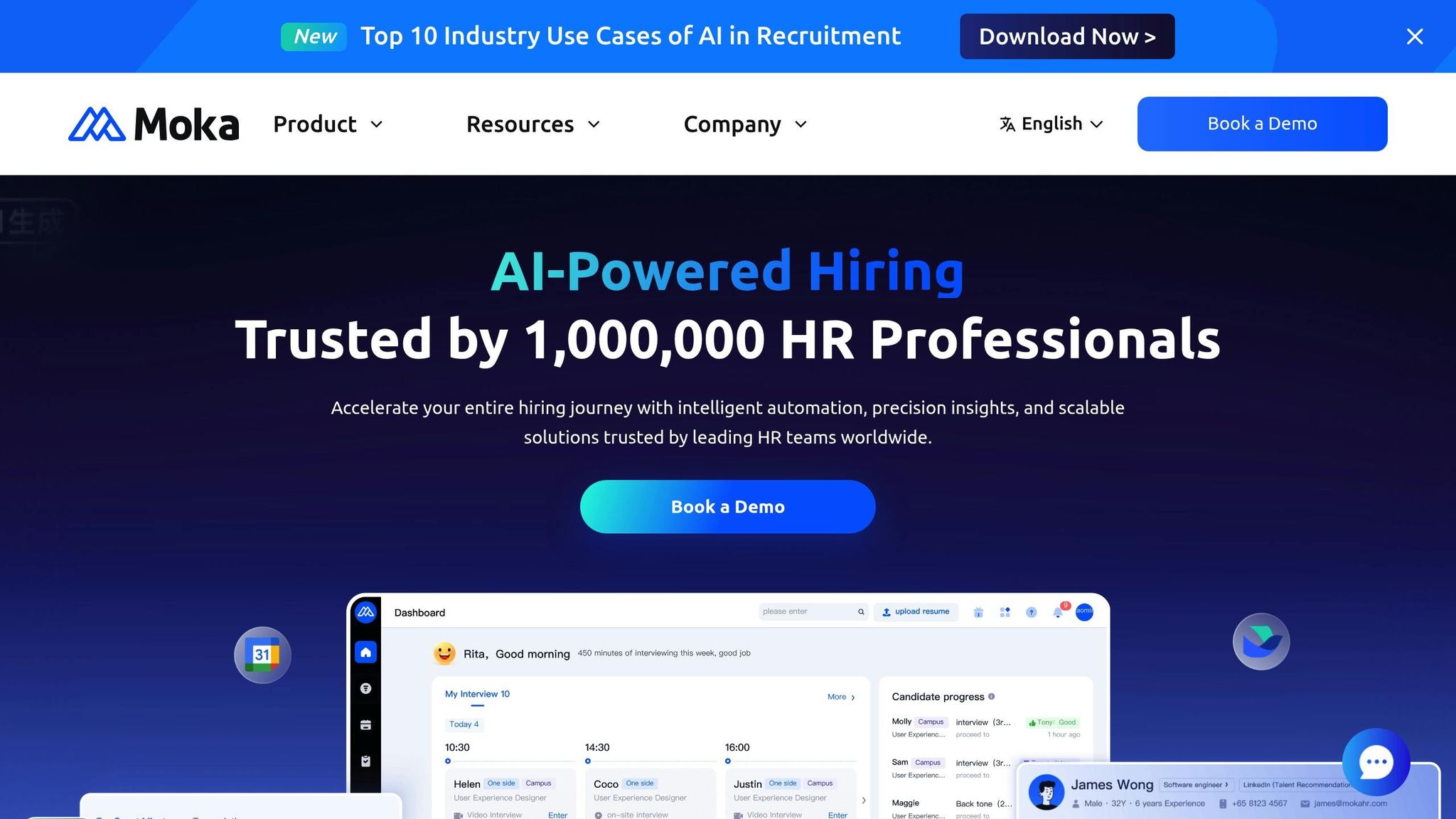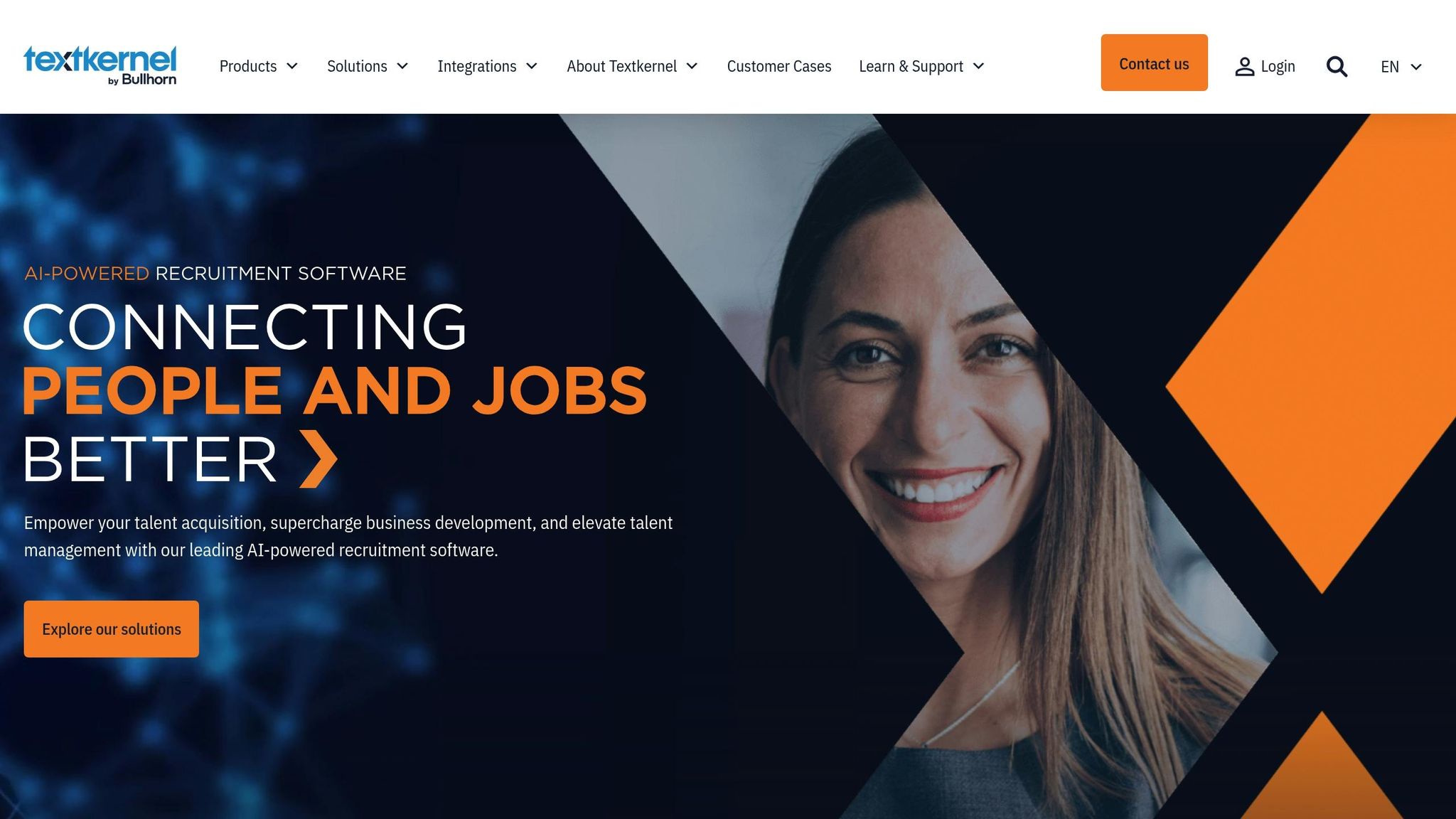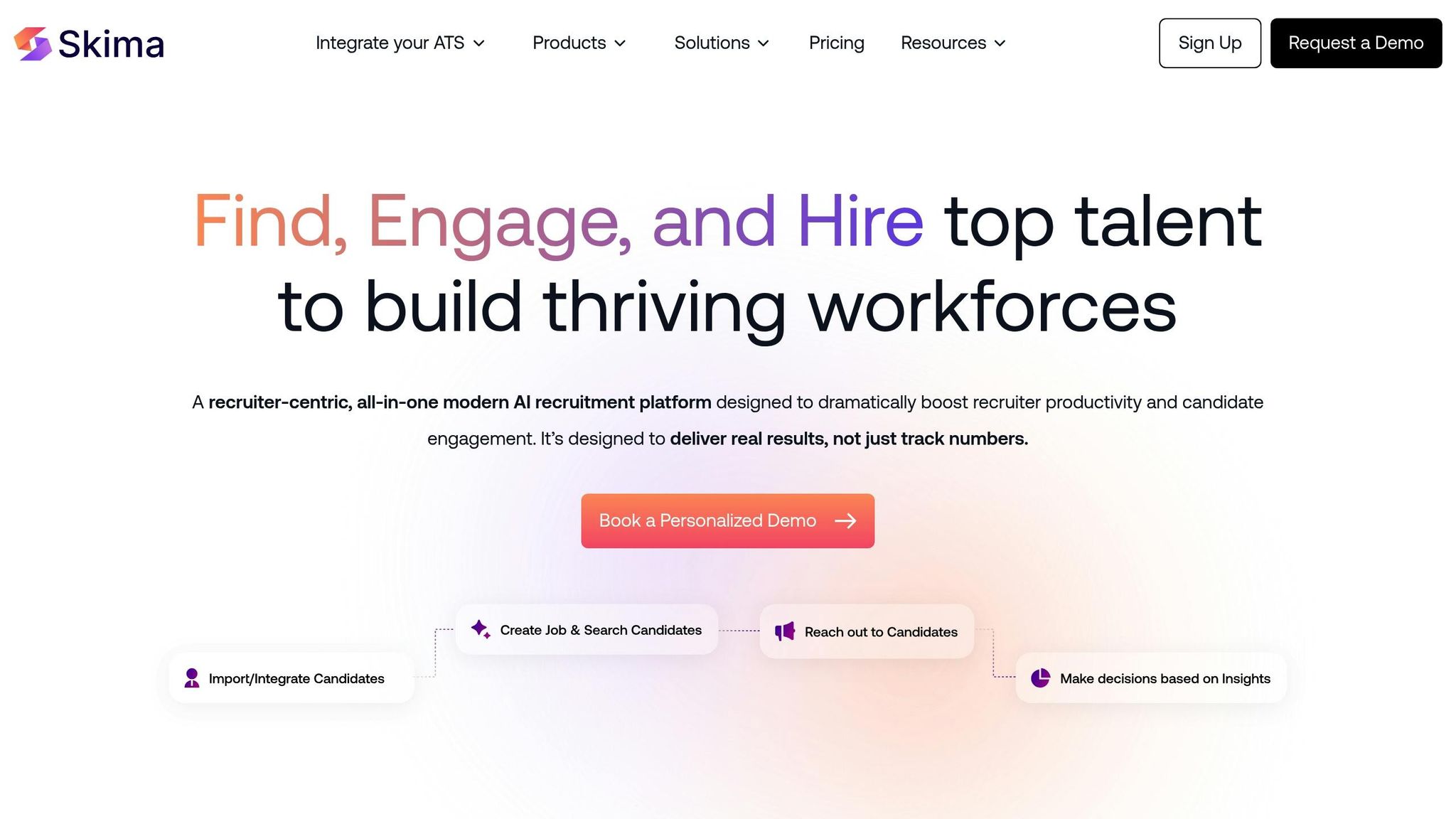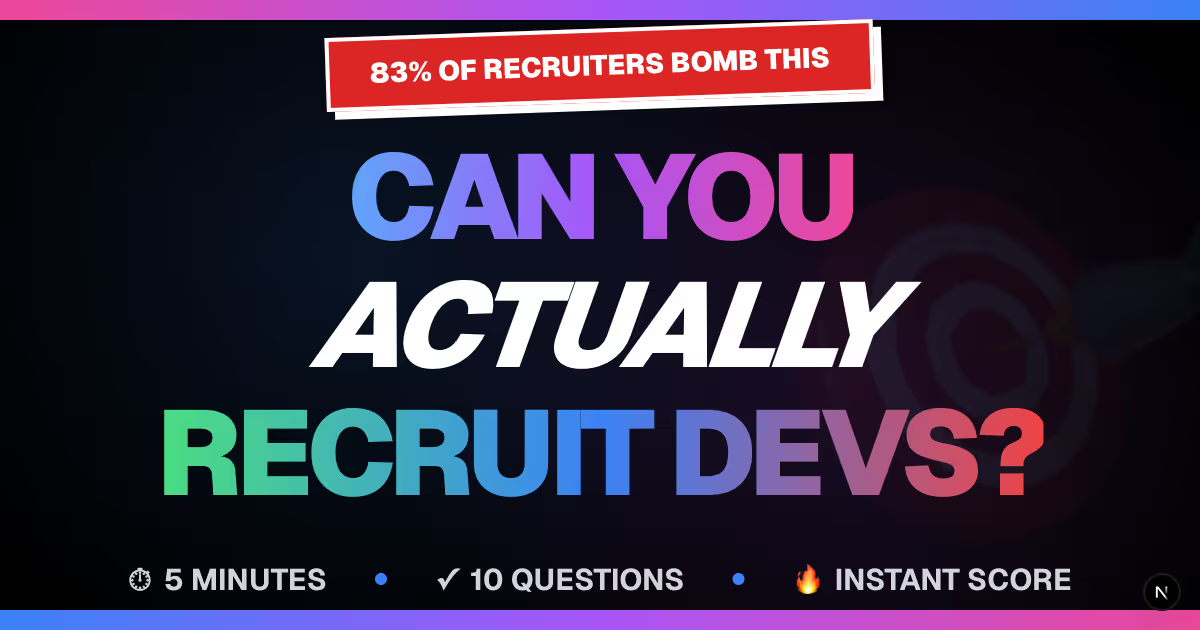


Explore the top automated tools for screening developer resumes in 2025, focusing on features, integration, and bias reduction.
In 2025, hiring developers has become more challenging, with manual resume reviews proving inefficient for high application volumes. Automated tools now dominate, offering features like technical skill assessment, bias reduction, and integration with applicant tracking systems (ATS). This guide compares 10 tools to help you choose the right one for your hiring needs.
Key Takeaways:
- daily.dev Recruiter: Connects recruiters with pre-qualified developers through opt-in introductions; integrates with ATS.
- MokaHR: Focuses on reducing bias by anonymizing resumes; provides diversity analytics.
- Sovren: Specializes in resume parsing but has limited integration details.
- Textkernel: Offers semantic matching and multilingual support but struggles with unconventional resume formats.
- Daxtra: Uses semantic matching; integration details are unclear.
- Rchilli: Processes high volumes of resumes but lacks transparency on technical parsing accuracy.
- Skima AI: Leverages AI for parsing and semantic matching; integrates via APIs.
- CVViZ: Budget-friendly, with strong parsing and ATS integration; starts at $49/month.
- BotFriday AI: Automates screening but lacks detailed technical parsing insights.
- HireVue: Combines resume screening with video assessments and cognitive challenges.
Quick Comparison
| Tool | Key Features | Bias Reduction | Integration | Pricing |
|---|---|---|---|---|
| daily.dev Recruiter | Developer-focused, opt-in intros | No | ATS integration | Predictable |
| MokaHR | Anonymized resumes, diversity data | Yes | Limited details | Custom |
| Sovren | Parsing, matching | No | Limited details | Custom |
| Textkernel | Semantic matching, multilingual | No | Limited details | Custom |
| Daxtra | Semantic matching | No | Limited details | Custom |
| Rchilli | High-volume parsing | Unclear | Limited details | Custom |
| Skima AI | AI parsing, semantic matching | Yes | API/webhook integration | Custom |
| CVViZ | AI parsing, ATS integration | Yes | Greenhouse, Lever, Workday | Starts $49/month |
| BotFriday AI | Automated screening | Unclear | Limited details | Custom |
| HireVue | Video + cognitive assessments | Yes | ATS integration | Custom |
Choose a tool based on your volume of resumes, technical requirements, and budget. For smaller teams, affordable options like CVViZ may work. Larger companies might need advanced features like semantic matching or video assessments from tools like HireVue.
1. daily.dev Recruiter

daily.dev Recruiter is a hiring platform designed specifically for developers, built on a network they already use to learn and engage. Instead of relying on outdated resume databases or impersonal cold outreach, this platform connects recruiters with pre-qualified developers through warm, double opt-in introductions.
This method ensures recruiters reach candidates who are genuinely interested in developer-focused content, making the process more effective. Plus, daily.dev Recruiter allows hiring teams to screen candidates using custom criteria tailored to the unique needs of their team.
The platform seamlessly integrates with existing applicant tracking systems and sourcing tools, making these warm introductions a natural part of your current workflow. With a clear and predictable pricing model that adjusts to hiring demands, companies can confidently plan their recruiting budgets without worrying about surprise costs. It's this thoughtful and efficient approach that makes daily.dev Recruiter stand out in the competitive world of tech hiring.
2. MokaHR

MokaHR is a recruitment platform designed to promote fairer hiring practices by reducing bias in the resume screening process. It does this by masking details like names, photos, and education during the initial evaluation, allowing recruiters to focus purely on a candidate's technical skills and experience. Additionally, it offers diversity analytics to help track and understand the demographics of the candidate pipeline.
What sets MokaHR apart is its emphasis on unbiased evaluations combined with actionable diversity insights. However, its success hinges on proper setup and seamless integration into existing workflows.
3. Sovren
Sovren specializes in parsing and matching resumes, aiming to simplify the recruitment process.
Integration Capabilities
Details about Sovren's integration options are not publicly shared. However, some users have reported challenges when connecting it to their existing ATS or HR software. These issues can lead to delays and may require additional development efforts. This underscores the need to carefully assess how well new tools fit into your current recruitment systems before implementation.
4. Textkernel

Textkernel simplifies the process of resume parsing and matching by pulling structured data from resumes and turning it into searchable candidate profiles. This makes it easier to connect the right candidates with the right roles.
Parsing Accuracy
Textkernel's technology works with resumes in formats like PDFs, Word documents, and plain text. It extracts key details such as technical skills, programming languages, and project experience. However, its accuracy can be affected by unconventional resume layouts, which may result in incomplete data extraction.
Semantic Matching
The platform goes beyond simple keyword matching by using semantic analysis to align candidate qualifications with job requirements. This means it can identify relevant expertise even when different terms are used. For example, a candidate mentioning "JavaScript frameworks" could still be matched to roles requiring knowledge of React or similar technologies.
Integration Capabilities
Currently, there’s no publicly available information about Textkernel’s compatibility with major Applicant Tracking Systems.
Pricing Transparency
Textkernel operates on a custom pricing model, so you’ll need to reach out to their sales team for specific details. Up next, let’s see how Daxtra tackles similar challenges.
5. Daxtra

Daxtra is a tool designed to help recruiters parse resumes and match candidates effectively, creating searchable databases of developer talent.
Parsing Accuracy
When it comes to parsing accuracy, Daxtra doesn’t provide specific details publicly. To get a clear understanding of its performance, recruiters will need to request a demo or trial.
Integration Capabilities
Daxtra's ability to integrate with popular ATS platforms and recruitment tools isn’t openly shared. It’s important to confirm whether it will work seamlessly with your existing tech stack.
Up next, let’s see how Rchilli approaches resume screening challenges.
6. Rchilli

Rchilli is a resume parsing tool designed to create searchable candidate databases and simplify the screening process for developer roles.
Parsing Accuracy
There’s no publicly available data on Rchilli’s accuracy when it comes to identifying technical skills or developer-specific keywords. Without detailed performance metrics or documentation, it’s hard to gauge how well the tool processes complex technical resumes. Recruiters might need to request a demo to see how it performs with their specific technical hiring needs.
Bias Reduction
The tool’s approach to reducing bias isn’t clearly outlined. Many modern resume screening tools include features like anonymizing candidate information to support diversity, but Rchilli’s capabilities in this area remain uncertain.
Integration Capabilities
Information about integration with ATS or workflow systems is limited. Recruiters interested in these features should reach out to Rchilli directly for more details.
Next, let’s explore how Skima AI tackles these screening challenges.
sbb-itb-d1e6221
7. Skima AI

Skima AI is a resume screening platform that uses artificial intelligence to connect developer candidates with technical roles. It relies on advanced parsing and semantic analysis to streamline the hiring process.
Parsing Capabilities
With its parsing features, Skima AI pulls out essential details from resumes, including technical skills, certifications, education, and programming languages.
Semantic Matching
The platform goes a step further by using semantic matching. This means it can align a candidate’s expertise - like experience with popular JavaScript frameworks - with specific job requirements, such as front-end development roles.
Integration
Skima AI is designed to fit seamlessly into existing workflows. Through APIs and webhooks, it can be integrated into applicant tracking systems and HR processes.
Pricing
Pricing information is provided upon request. Up next, we’ll explore how CVViZ tackles similar challenges.
8. CVViZ

CVViZ is a resume screening platform powered by AI, trusted by more than 1,000 companies worldwide. Its users range from U.S. tech startups to mid-sized enterprises.
Parsing Accuracy
The platform’s AI engine is designed to handle a variety of resume formats and industry-specific jargon. It accurately identifies key details like technical skills, work experience, certifications, and education.
Semantic Matching
Unlike traditional keyword-based systems, CVViZ uses semantic algorithms to connect related skills and technologies. This ensures that qualified candidates aren't missed. For instance, if a job requires React.js expertise, the platform can also highlight candidates with experience in similar JavaScript frameworks or relevant front-end development skills.
Bias Reduction
To ensure fair screening, CVViZ removes personal identifiers such as names, photos, and graduation years during the initial evaluation process. Regular updates to its AI ensure the focus remains on skills and qualifications.
Integration Capabilities
CVViZ seamlessly integrates with widely-used Applicant Tracking Systems (ATS) in the U.S., including Greenhouse, Lever, and Workday. These API-based integrations allow for smooth data transfer and workflow automation, helping companies maintain their existing hiring processes without disruption.
Pricing Transparency
The platform offers straightforward pricing plans in U.S. dollars, starting at $49 per month. Pricing depends on the number of active jobs or users and includes options for monthly or annual subscriptions. A free trial and detailed breakdown of features make it easier for U.S.-based companies to plan budgets. Custom pricing is also available for larger organizations.
Next, we’ll take a closer look at how BotFriday AI tackles developer resume screening with its distinct approach.
9. BotFriday AI

BotFriday AI is a recruitment assistant driven by artificial intelligence, designed to streamline the process of screening resumes for developer positions. While it promises to handle this task efficiently, there isn’t much detailed information available about its ability to accurately parse technical terms or navigate resumes with unconventional formatting.
Coming up, we’ll take a closer look at how HireVue tackles the challenge of screening developer resumes.
10. HireVue

HireVue provides an AI-powered video interviewing platform designed to simplify candidate evaluations and improve hiring processes. By combining interactive video assessments with cognitive challenges, it offers recruiters a dynamic way to assess potential hires.
Integration Capabilities
HireVue seamlessly integrates with Applicant Tracking Systems and supports over 7,000 apps. It also features timezone-aware scheduling, making it easier for tech companies to incorporate advanced assessments into their hiring processes without disrupting existing workflows.
Reducing Bias in Hiring
To tackle bias in candidate evaluations, HireVue uses AI-driven analytics to analyze responses. These insights focus on key indicators like communication skills and alignment with the role, helping recruiters make more objective decisions.
Game-Based Assessments
HireVue also includes game-based challenges that evaluate problem-solving and cognitive abilities. These assessments provide a deeper look into both soft skills and technical expertise. By combining video interviews with these interactive tests, HireVue offers a comprehensive approach to assessing candidates’ competencies.
These features make HireVue a powerful tool for improving the hiring process while addressing common challenges like bias and skill evaluation.
Advantages and Disadvantages
Every resume screening tool comes with its own set of strengths and weaknesses. Knowing these pros and cons can help you choose the one that fits your recruitment goals. Below is a quick breakdown of what each tool brings to the table.
daily.dev Recruiter stands out with its developer-focused approach and clear pricing model. Its warm, double opt-in connections offer a refreshing alternative to traditional resume screening.
MokaHR simplifies resume parsing and aims to reduce bias in hiring. However, it’s important to evaluate its performance to ensure it meets your technical standards.
Sovren is known for its seamless integration with applicant tracking systems. Be sure to confirm its compatibility with your existing setup.
Textkernel supports multilingual processing, making it ideal for diverse candidate pools. Be sure to clarify its pricing structure to avoid surprises.
Daxtra goes beyond keyword searches with its semantic matching capabilities. Take time to assess its usability and how well it aligns with your technical needs.
Rchilli is designed for high-volume resume processing, perfect for large-scale hiring. Double-check its ability to capture detailed technical skills effectively.
Skima AI incorporates features aimed at reducing bias during the screening process. It’s worth reviewing its integration options and overall performance.
CVViZ provides budget-friendly resume parsing. However, you’ll want to evaluate how well its semantic matching works for complex technical roles.
BotFriday AI focuses on automation to minimize manual screening tasks. Make sure to explore its customization options for specialized requirements.
HireVue takes a broader approach by combining resume screening with video assessments. Consider whether this comprehensive method aligns with your need for either quick filtering or deeper evaluations.
Modern resume screening tools excel at identifying technical skills with far greater precision than manual reviews. However, their ability to reduce bias varies from platform to platform, with each offering its own approach to fairness.
Integration options also differ widely, so mapping out how a tool fits into your workflow is crucial. Tools with transparent pricing models make it easier to plan your budget compared to those with less clear structures.
These points provide a foundation for making informed recommendations.
Final Recommendations
Selecting the right resume screening tool requires a careful look at your hiring needs, budget, and technical setup. To make an informed decision, focus on these key points:
- Developer-first approach: Tools like daily.dev Recruiter prioritize developers, ensuring higher engagement and relevance for tech roles.
- Budget considerations: Understand the pricing structure to avoid surprises and ensure the tool aligns with your financial plan.
- Integration capabilities: Make sure the tool works smoothly with your existing ATS and recruitment systems. Even if setup takes some time, the improvement in candidate matching can be worth it.
- Candidate volume and role complexity: Whether you're dealing with a high volume of applicants or filling niche positions, choose a tool that can handle your specific needs without compromising accuracy.
- Bias reduction: Look for tools designed to reduce unconscious bias, promoting diversity and fairness in your hiring process.
The best tech recruiters don’t rely on a single tool. Instead, they often use a combination of solutions to address various stages of the recruitment process. Start with a tool that addresses your most pressing needs, and as your hiring goals evolve, consider adding more to your toolkit. Ultimately, the ideal solution is one that consistently delivers qualified candidates while fitting seamlessly into your workflow.
FAQs
How can I choose the right resume screening tool for my company's hiring needs and budget?
To find the right resume screening tool for your company, start by assessing your hiring volume and team size. Some tools are tailored for handling large-scale recruitment, while others are better suited for smaller, more targeted hiring needs.
Then, pinpoint your specific requirements. Features like AI-driven filtering, compatibility with your applicant tracking system (ATS), tools to minimize bias, and detailed analytics can make your hiring process smoother and more effective.
Lastly, think about your budget. Resume screening tools range from free versions to high-end options with custom pricing. Focus on tools that match your hiring objectives and offer the best return on your investment.
What are the key advantages of using AI-powered tools for screening developer resumes compared to manual reviews?
AI-powered resume screening tools are transforming the hiring process by automating the time-consuming task of reviewing resumes. These tools can sift through large volumes of applications in a fraction of the time it would take a recruiter, pinpointing candidates with the right technical skills and qualifications almost instantly.
One standout feature is their ability to help reduce unconscious bias. By sticking to objective data and predefined criteria, these tools create a fairer evaluation process, fostering a more inclusive hiring environment. They also bring a higher level of accuracy to the table, cutting down on the human errors and inconsistencies that can creep into manual reviews.
In short, these AI-driven tools make the hiring process smoother and more efficient, freeing up recruiters to spend more time connecting with top-tier candidates instead of wading through endless resumes.
How can I make sure a resume screening tool works well with my current Applicant Tracking System (ATS)?
When choosing a resume screening tool, it's crucial to ensure it works seamlessly with your current ATS. Look for tools that offer integration with popular ATS platforms, often through API access or pre-built connectors. These features simplify both the setup process and ongoing data sharing.
Before making a decision, check with your ATS provider to confirm the tool's compatibility and whether any extra configuration or support is necessary. Taking these steps upfront can help you avoid potential hiccups and maintain an efficient hiring process.
Related Blog Posts








